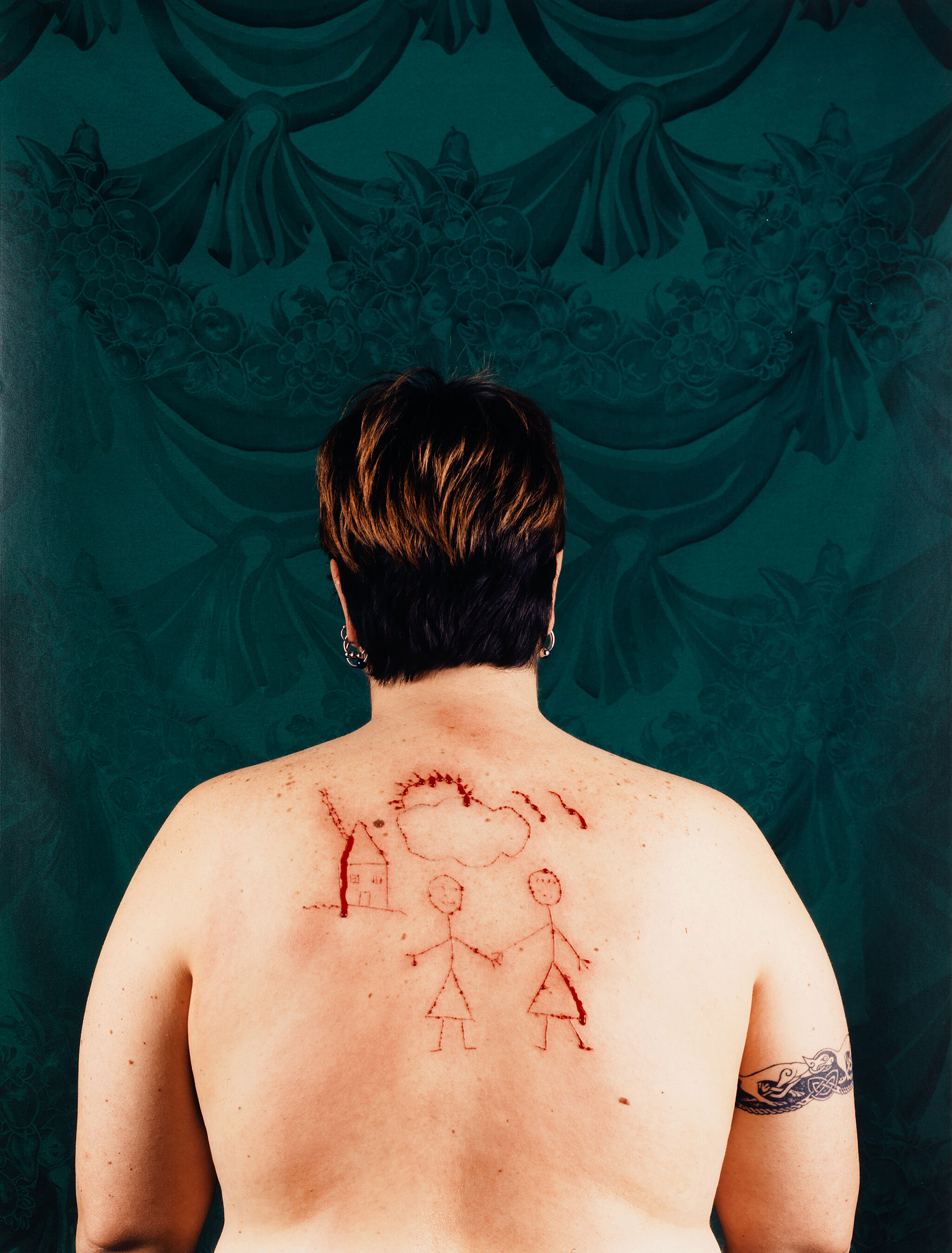What It Becomes | Art & Artists
Aug 24, 2024–Jan 12, 2025
What It Becomes | Art & Artists
Catherine Opie
10
Following a breakup in her early thirties, Catherine Opie began to compulsively doodle this stick-figure scene on her telephone notepad. At the time, Opie felt as though her queer identity was somehow incongruous with this image of familial and domestic harmony, and the drawing encapsulated a longing for a way of life that felt inaccessible to her. After nearly a year of rendering it on paper, she decided to have the scene cut into her back. Initially delineated in blood—a substance weighted by the impact of the AIDS epidemic on her community—the drawing eventually healed into a scab, underscoring Opie’s belief that “these kinds of images create a story of not only one’s own desire for domesticity but what it means when you actually embody it.”

